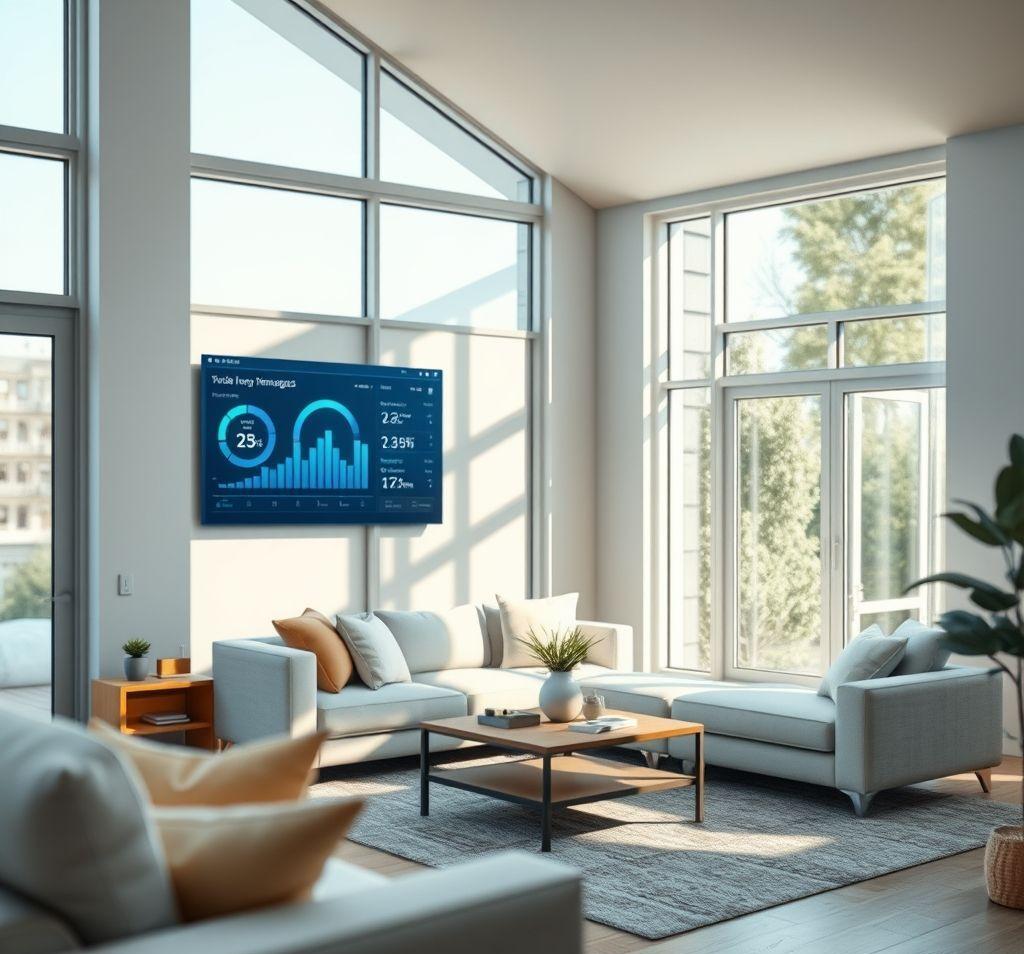The Future of Home Energy Management: AI and Machine Learning Revolutionizing Energy Monitoring in 2024
Home energy management is undergoing a massive transformation, fueled by the power of Artificial Intelligence (AI) and Machine Learning (ML). In 2024, these technologies are moving beyond simple energy monitoring to offer predictive analytics, automated energy-saving recommendations, and seamless integration with smart grids, promising a more efficient and sustainable future.
Predictive Analytics: Anticipating Energy Needs and Waste
One of the most significant advancements is the use of predictive analytics. AI algorithms analyze historical energy consumption data, weather patterns, occupancy schedules, and even appliance usage patterns to forecast future energy needs. This goes far beyond simple historical tracking. For instance, ML models can learn that on sunny days, a home’s solar panels will generate a certain amount of electricity, reducing the need to draw power from the grid. They can also learn that energy consumption spikes on weekday evenings due to increased lighting, cooking, and entertainment activities.
With this predictive capability, homeowners can proactively adjust their energy usage. Imagine receiving a notification in the morning: “Based on today’s weather forecast, your solar panels will generate 70% of your energy needs. Consider pre-cooling your home during peak solar production to reduce reliance on the grid later in the day.” Such actionable insights, driven by AI, empower users to make informed decisions and minimize energy waste.
Furthermore, predictive analytics can also identify potential equipment malfunctions. By monitoring the energy signatures of appliances, AI can detect anomalies that suggest a refrigerator is running inefficiently or an HVAC system is nearing failure. Early detection allows for timely maintenance, preventing costly repairs and minimizing energy waste associated with malfunctioning equipment.
Automated Energy-Saving Recommendations: Personalized Efficiency
AI-powered energy management systems don’t just predict; they actively recommend ways to save energy. These recommendations are highly personalized, taking into account individual household characteristics, preferences, and energy goals. The system learns about the homeowner’s lifestyle and tailors suggestions accordingly.
For example, instead of a generic recommendation to “lower your thermostat,” the system might suggest: “Lower your thermostat by 2 degrees between 10 PM and 6 AM, when the house is typically unoccupied, to save approximately 10% on your heating bill.” It can even automate these adjustments, with the homeowner retaining full control to override the changes. The system could also recommend shifting energy-intensive tasks, like laundry or dishwashing, to off-peak hours when electricity rates are lower, automatically scheduling them through smart appliance integration.
The key to successful automated recommendations lies in the system’s ability to learn and adapt. The more data it collects, the more accurate and relevant its suggestions become. Over time, the system fine-tunes its algorithms to maximize energy savings while minimizing disruption to the homeowner’s lifestyle. Furthermore, these systems can integrate with smart home devices to automatically adjust lighting, window shades, and other energy-consuming elements based on real-time conditions and learned patterns.
Smart Grid Integration: A Symbiotic Relationship
The future of home energy management is inextricably linked to the evolution of smart grids. AI-powered systems enable homes to become active participants in the grid, contributing to its stability and efficiency. Integration with the smart grid allows homes to respond dynamically to changes in electricity supply and demand, optimizing their energy consumption accordingly.
For instance, during periods of high grid demand, the system can automatically reduce non-essential energy usage, such as dimming lights or temporarily adjusting the thermostat, helping to prevent blackouts. In return, homeowners may receive financial incentives for participating in demand response programs. AI algorithms can also optimize the charging of electric vehicles (EVs) based on grid conditions, ensuring that EVs are charged during periods of low demand and renewable energy availability.
Furthermore, smart grid integration enables more efficient distribution of renewable energy. AI can analyze weather patterns and solar production forecasts to optimize the flow of electricity from rooftop solar panels to the grid. This ensures that excess solar energy is used effectively, reducing reliance on fossil fuel-based power plants and promoting a cleaner energy future. The bidirectional flow of energy and information between homes and the grid is essential for creating a more resilient and sustainable energy ecosystem.



